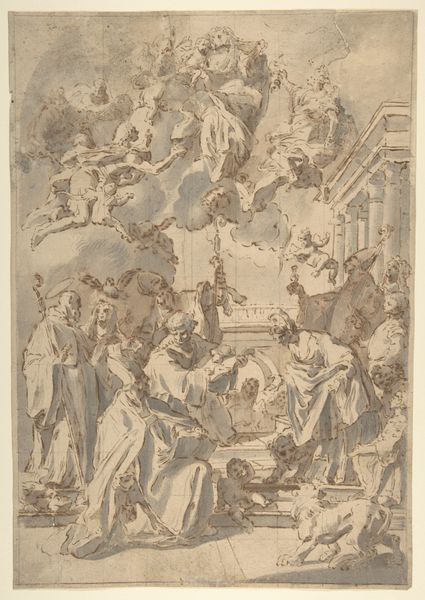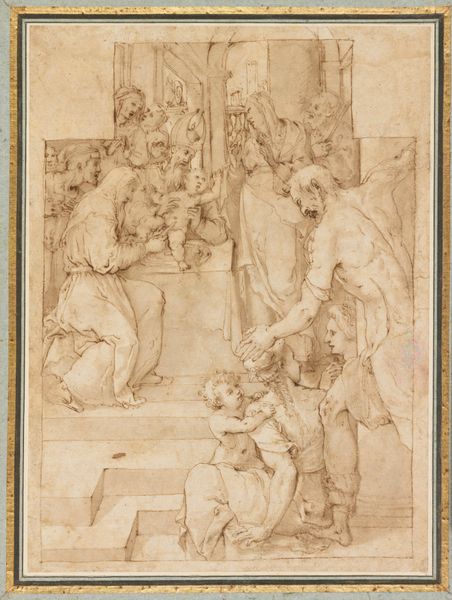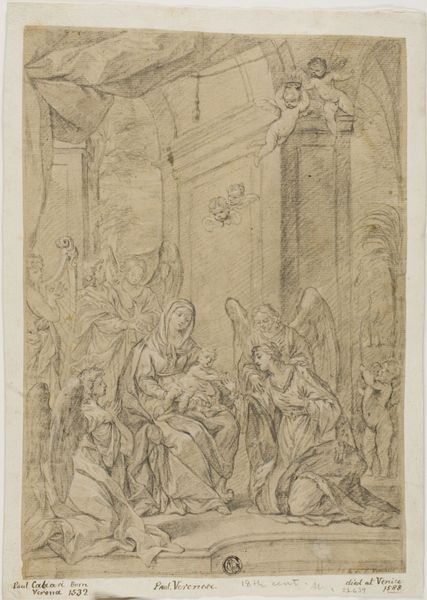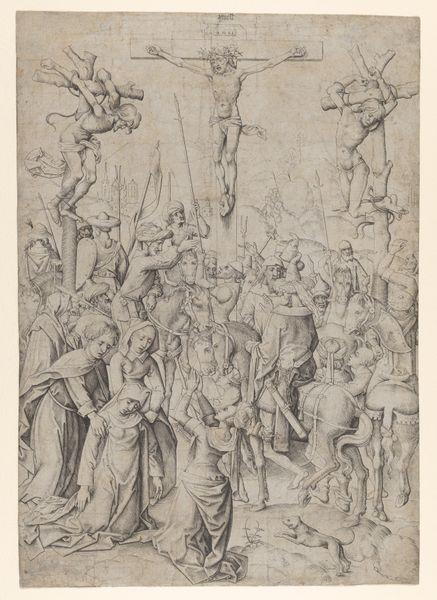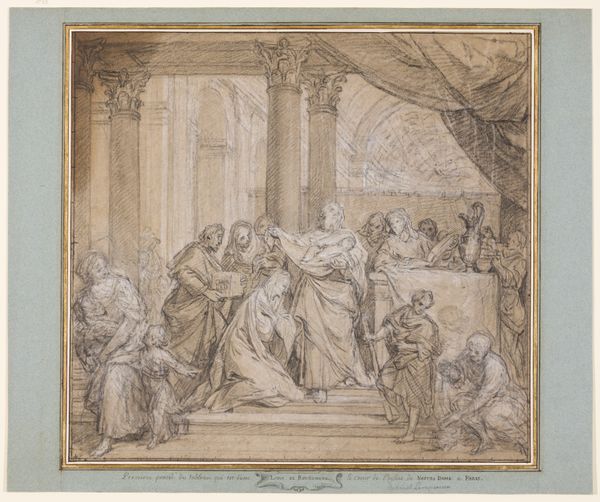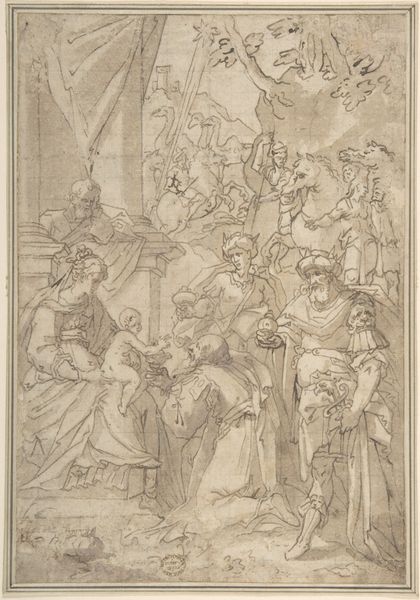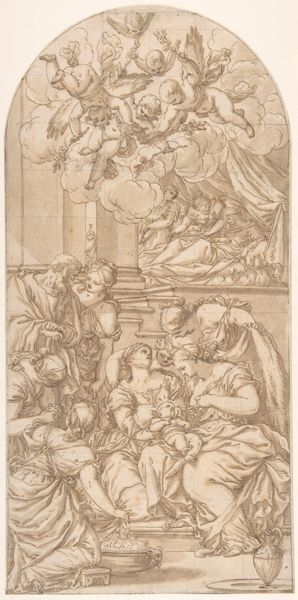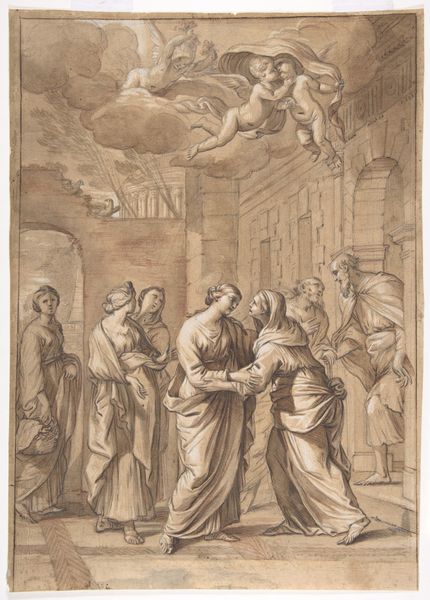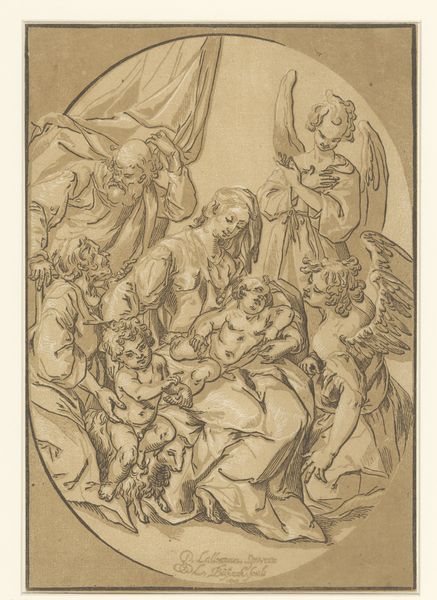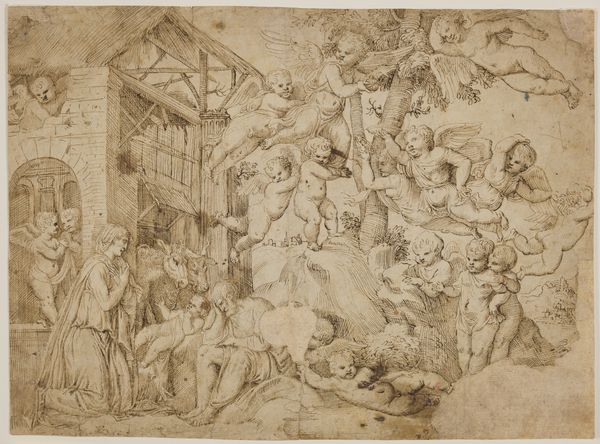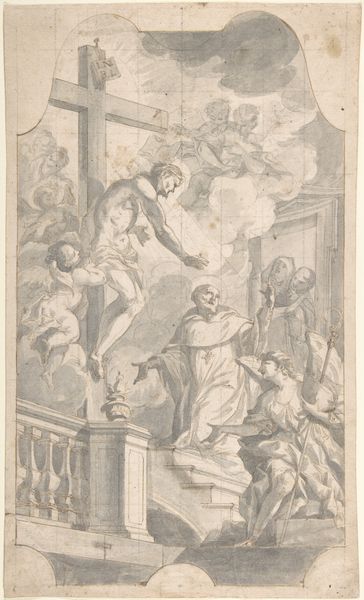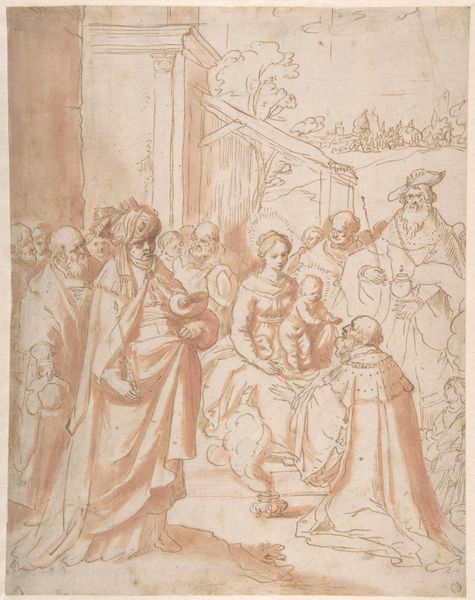
Allegory of the Death of a Religious Man 1601 - 1642
0:00
0:00
drawing, print, paper, ink
#
portrait
#
drawing
#
allegory
#
baroque
#
ink painting
# print
#
paper
#
ink
#
coloured pencil
#
history-painting
#
watercolor
Dimensions: Sheet: 7 9/16 × 6 5/16 in. (19.2 × 16 cm)
Copyright: Public Domain
Editor: Right, so this drawing, "Allegory of the Death of a Religious Man," is by Frans Francken the Younger, made sometime between 1601 and 1642. It's an ink and watercolor piece on paper. It feels incredibly intimate, even with so many figures crammed in. I'm particularly struck by the swirling cloudscape at the top… almost like the ceiling of reality is opening up. What jumps out at you when you look at it? Curator: Oh, "ceiling of reality opening up"… I love that. To me, it’s a masterclass in controlled chaos, really. Think about it – you have the earthly scene of mourning, all contained and framed within the room. But above, that heavenly vision is all movement and light, breaching the composition, literally! Francken’s clever juxtaposition whispers of the Baroque era’s obsession with the spectacle of the divine intervening in human affairs, a drama playing out in sepia tones. The etching-like detail suggests the ephemeral quality of life itself, wouldn't you agree? Editor: I see what you mean about the contrast creating a drama. Do you think he meant for it to be comforting or unsettling? Curator: A bit of both, I suspect! Francken offers us the balm of spiritual ascension to soothe the sting of mortality. The swirling clouds… it’s like looking into the infinite. Are you finding that hopeful, even now? Editor: I am, actually. I hadn't considered the 'hopeful' element at first. It is growing on me. Curator: Precisely! Baroque art often wants to sweep you away on a tide of emotion, and what bigger emotion is there than our collective fear, or hope, around death? Editor: This has completely altered my understanding of it, that even with an obvious theme like the death of a religious man, an artist has freedom to make it intimate. Curator: Yes, and hopefully the artist inspires us all to re-think what is known!
Comments
No comments
Be the first to comment and join the conversation on the ultimate creative platform.
